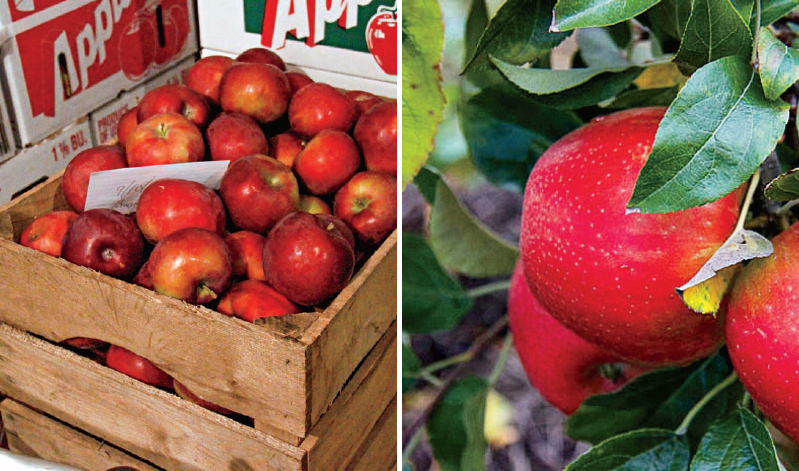In 1978, Vernon Bardenhagen was getting ready to retire. He was the fourth-generation Bardenhagen to farm the land in Suttons Bay, Michigan, that his family homesteaded around
the end of the Civil War. In his more than three decades of running the farm, he grew the potatoes and strawberries the area was known for, and added cherry trees to the land.
His son Jim had left Suttons Bay after high school to study at Michigan State. Then he took a job that sent him and his young family east. Even then, every summer vacation included a return to Suttons Bay to help with the cherry harvest.
He was living in Charleston, West Virginia, when he decided to come home to take over as the farm’s fifth Bardenhagen.
Fast-forward to 2013. Now it was Jim getting ready to retire.
Will the farm have a sixth generation?
In Northern Michigan, tourists and seasonal residents buy cherry T-shirts and cherry refrigerator magnets. They sip cherry–mocha truffle lattes, have salads spiked with dried cherries, then fly home out of Cherry Capital Airport.
And for a short time each summer, they snack on sweet cherries they pick up at roadside stands. Cherry growers spend about fifty weeks a year tending their cherry trees and two weeks harvesting.
Everything has to happen quickly, because so much can go wrong.
Speed is imperative. The shelf life of a sweet cherry is brief. It’s as perfect as it will ever be the minute it comes off the tree.
But that assumes it didn’t rain in the days before harvest. If moisture collects on a ripe cherry, it can cause an unsightly scar. It actually sweetens the fruit, but the blemish eliminates it from the fresh cherry market. Those cherries are destined for juice. Or the pigs.
It also assumes the cherries made it through spring. An early warming can trigger production, and then there’s no turning back. If there’s a freeze after those blooms set—not an uncommon occurrence—it can knock out that season’s cherries.
And all that assumes a developer hasn’t razed the orchard to build hotels or houses, tearing out the farmland that brings people here in the first place.
These are the kinds of things that Jim has been dealing with since he took over the farm. There isn’t much he can do about the weather, but he does what he can to protect farms on the Leelanau Peninsula, a sliver of land that juts into Lake Michigan.
Tourism and a burgeoning wine industry have driven up the price of land in the area, which has put a lot of pressure on farmers to sell their property. Jim works with the Leelanau Conservancy, which helps farmers by buying “development rights,” effectively paying them to keep farming their land and designating the property as farmland.
Thousands of acres have been protected this way.
Cammie Buehler, who runs a catering operation called Epicure in nearby Omena, had Jim grow potatoes on her property for a few summers. She remembers seeing him out in the field on his tractor. She was struck by how happy he looked there, how content.
She calls Jim the patriarch of the agriculture community. He provides institutional knowledge for young farmers when they need information on things like pest management or harvesting.
He isn’t just protecting farmland. He’s protecting farming.
If Vernon’s legacy to the farm is cherries, Jim’s is apples. He added the trees in the early 1990s, and apple season starts a few weeks after cherry season ends, so it keeps the work steady.
Jim heard that local schools were having trouble getting students to eat the fruit included with their lunches. Then he heard that schools were buying apples from out of state. There’s your problem. Michigan apples taste better, he said, and the kids know it.
He worked with the schools to get local apples in the lunchroom, and the schools say that the kids are eating their apples now.
Vernon had eight possible successors for the farm. Jim has two. Jim’s daughter, Ginger Bardenhagen, already lives on the farm, raising pigs and chickens in her spare time.
In college, she majored in German and spent a semester in Germany. After she finished school, she went back to spend a year.
Well, almost a year. She left after cherry harvest one year and had to be back in time for the next. When you’re a Bardenhagen, you always come back for cherry season.
Ginger sees how hard her dad works and how much he puts into the community. She respects it immensely. She isn’t sure if she can do it.
But there is so much history. Ginger remembers watching her grandfather work the orchards during those summer vacations as a kid. She has tracked the family tree and appreciates the history of this land.
There was soul-searching. Then there was a plan. Ginger and her husband, Ryan, want to take over the apple orchard. Ginger’s brother, Chris, will take the tart cherry trees. They have to figure out how to split up the sweet cherries and potatoes, no small issue since those crops bring in much of the farm’s revenue. There are still questions as to whether the farm can support two families. The plan is to figure that out.
Ginger is already thinking about what her stamp on the farm might be. She may build a distillery so she and Ryan can make artisanal spirits from the crops they’ll grow.
The evolution continues. The sixth generation is on board.
Check back in a quarter-century to see about the seventh.
